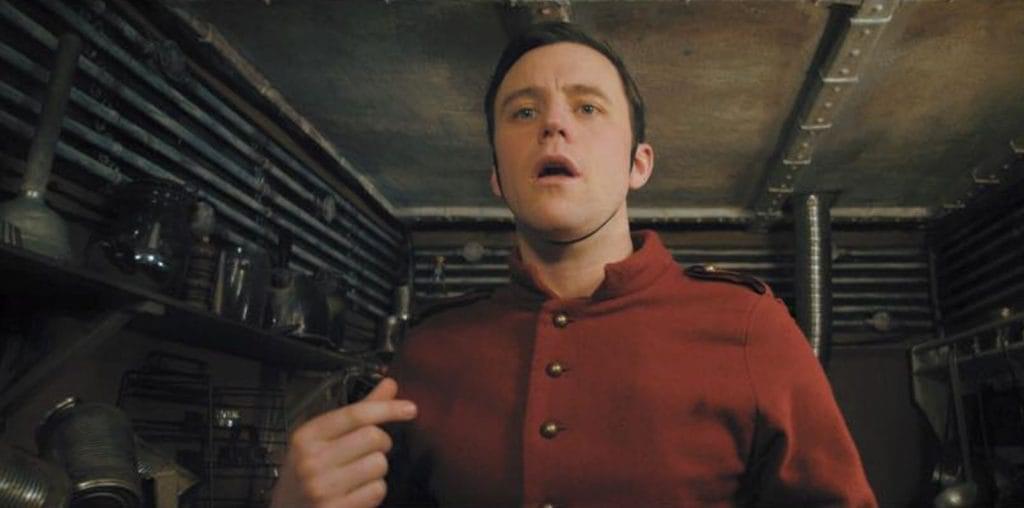
Originating with informal gatherings organized by AMIA — the American Moving Image Archivists organization — the nonprofit Home Movie Day is part celebration of amateur art and part promotion of film preservation awareness. All are welcome to bring their home movies to the event in any film format — 8 millimeter, Super-8, 16 millimeter (“Get it?” asks the official website – “8/16!”) — and screen them for an audience. Grand Canyon vacation reels are not only expected but encouraged. “I’ve got a friend at the George Eastman House, Chad Hunter, who’s really been one of the driving forces behind this nationally,” says Joe Morrison, one of the organizers of the Pittsburgh Home Movie Day. “I’ve gone up to Rochester, New York, got a tour of the facility and got to look around. I’m very interested in archiving issues. Getting to know him pointed me in the direction of getting a Home Movie Day going here in Pittsburgh.”
Joe Morrison loves film. He watches movies with a zeal that exceeds that of even the most ardent film buff. As the head of the equipment office at Pittsburgh Filmmakers, Morrison surrounds himself with films. He also collects them. In many ways, he rescues them. “I’ve got piles of movies that people have given me, or that I’ve rescued from the dumpster myself,” he says. “It’s just unbelievable that people would toss these things. They figure that once they’re transferred to VHS, then they’re good to go, you know? Film will far outlast any VHS cassette. The Library of Congress is sitting on films that are a hundred years old.”
On August 16th, dozens of Home Movie Day events are taking place across the country as well as worldwide, with events taking place in Toronto, Mexico City and Toyohashi, Japan. Governor Bill Richardson of New Mexico has declared August 16 “Home Movie Day.”
Inspired by Hunter, and organized by Morrison and Greg Pierce of the Warhol and experimental Orgone Cinema, the Pittsburgh Home Movie Day is being sponsored by Summit Film Labs, who will be on hand to provide rewinds, splicers and other filmmaking supplies for people whose films might not be in the best of shape. “They’re going to open the doors around six, get started around seven and go as long as people have film to show,” says Russ Scheller, president of Summit. “When I was down at the Orphan’s Film organization down in South Carolina this past year, they did much the same thing. People came from all around — they watched film the whole night. I left around 1:30 in the morning and I think they went for another three hours. This Home Movie Day is really just to make people aware of film and get people more interested in film. There are a lot of hidden treasures to be found in these amateur films. You know, it’s amazing to me, but there’s a large audience out there for it. Actually, there are communities around the globe, not just in the United States.”
“It’s a way to get people to screen their movies for the public, but also to get some hard science information about preserving,” Morrison says. “Holding onto film, how to recognize degradation of film, things like shrinkage and vinegar syndrome, color bleaching — there’s lots of bad things that can happen to film.”
To the casual filmgoer, and even the casual reader, all this hoopla may seem to be a bit antiquated. After all, with the new digital technologies, it’s now easier — and cheaper — than ever to produce your home movies on video and edit them on your home system. For a few thousand dollars, you can create your own movie studio, whereas with film you’re working with seemingly outdated and oftentimes used equipment, with developing costs becoming increasingly prohibitive. Right? Morrison concedes the fact that film is expensive compared to digital video or even to VHS. But…
“In terms of what you get for that cost, you get so much bang for that buck,” he says. “The glory of the projected image — unless you have a really high-end, $10,000 video projector, you’re gonna be able to project a beautiful, glorious image bigger than any TV screen. You’re gonna get something that lasts forever. It’s actually easier to handle in a lot of ways than doing post-production on a Mac or a PC. There’s nothing that beats shooting a 50-foot roll of Super-8 film and throwing it on that projector the minute you get it back.
“Shooting film is more organic in a lot of ways. Shooting film also changes the way you see things. The instant gratification feedback of video promotes a certain way of shooting. I won’t say ‘careless’— tape is cheap, you know? So you shoot differently. When you know the images cost that much, they become a little more precious. You frame differently, you choose differently, perhaps. You have less material to look at in the end. It has a certain value to it that you don’t necessarily attach to a two-hour videotape.”
For more info, check out the Home Movie Day website.
